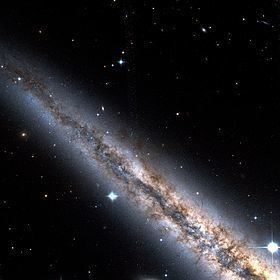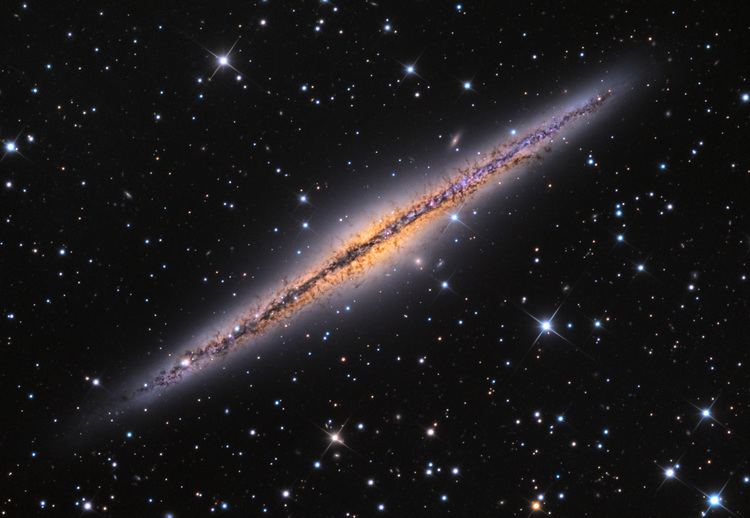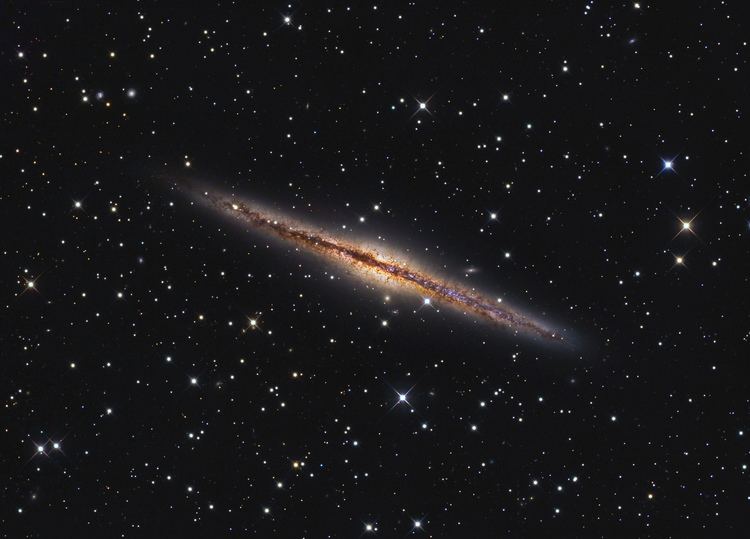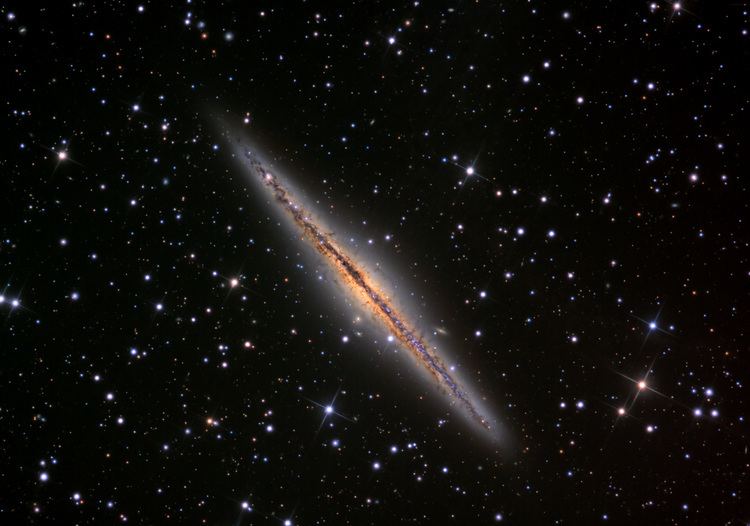Right ascension 02 22 33.4 Redshift 528 ± 4 km/s Apparent size (V) 13′.5 × 2′.5 Magnitude 10.8 Apparent magnitude (V) 10.8 | Declination +42° 20′ 57″ Type SA(s)b? Apparent mass ~320 billion M☉ | |
 | ||
Distance 27.3 ± 1.8 Mly (8.4 ± 0.5 Mpc) Similar NGC 7331, NGC 4565, NGC 4631, NGC 6946, NGC 2403 | ||
Ngc 891 edge on spiral galaxy in andromeda
NGC 891 (also known as Caldwell 23) is an edge-on unbarred spiral galaxy about 30 million light-years away in the constellation Andromeda. It was discovered by William Herschel on October 6, 1784. The galaxy is a member of the NGC 1023 group of galaxies in the Local Supercluster. It has an H II nucleus.
Contents
- Ngc 891 edge on spiral galaxy in andromeda
- Ngc 891 caldwell 23 from the kleinfriesen observatory 48
- Peculiarities
- In popular culture
- References

The object is visible in small to moderate size telescopes as a faint elongated smear of light with a dust lane visible in larger apertures.

In 1999, the Hubble Space Telescope imaged NGC 891 in infrared.
In 2005, due to its attractiveness and scientific interest, NGC 891 was selected to be the first light image of the Large Binocular Telescope. In 2012, it was again used as a first light image of the Discovery Channel Telescope with the Large Monolithic Imager.

Supernova SN 1986J was discovered on August 21, 1986 at apparent magnitude 14.
Ngc 891 caldwell 23 from the kleinfriesen observatory 48
Peculiarities

NGC 891 looks as the Milky Way would look like when viewed edge-on (some astronomers have even noted how similar to NGC 891 our galaxy looks as seen from the Southern Hemisphere) and in fact both galaxies are considered very similar in terms of luminosity and size; studies of the dynamics of its molecular hydrogen have also proven the likely presence of a central bar. Despite this, recent high-resolution images of its dusty disk show unusual filamentary patterns. These patterns are extending into the halo of the galaxy, away from its galactic disk. Scientists presume that supernova explosions caused this interstellar dust to be thrown out of the galactic disk toward the halo.
It may also be possible that the light pressure from surrounding stars causes this phenomenon.

The galaxy is a member of a small group of galaxies, sometimes called the NGC 1023 Group. Other galaxies in this group are the NGCs 925, 949, 959, 1003, 1023, and 1058, and the UGCs 1807, 1865 (DDO 19), 2014 (DDO 22), 2023 (DDO 25), 2034 (DDO 24), and 2259. Its outskirts are populated by multiple low-surface brightness, coherent, and vast substructures, like giant streams that loop around the parent galaxy up to distances of approximately 50 kpc. The bulge and the disk are surrounded by a flat and thick cocoon-like stellar structure. These have vertical and radial distances of up to 15 kpc and 40 kpc, respectively and are interpreted as the remmant of a satellite galaxy disrupted and in the process of being absorbed by NGC 891.
In popular culture
The soundtrack of the 1974 film Dark Star by John Carpenter features a muzak style instrumental piece called When Twilight Falls On NGC 891.
The first solo album by Edgar Froese, Aqua, contained a track called "NGC 891". Side 2 of the album, which included this track, was unusual in having been a rare example of a commercially issued piece of music recorded using the artificial head system.
